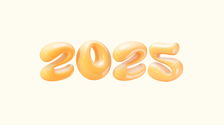When learning a foreign language, you should pay attention to details. If you only catch a glimpse of a sentence and guess its meaning, you might misunderstand the whole thing... Therefore, don't be too self-confident!
Don't read or interpret something too fast. Make a thorough analysis of the sentence to confirm your first idea and make sure you really have its meaning. Remember that words can have different meanings, idioms occur frequently, and that the meaning of a sentence can be completely transformed if you add, remove, or change the place of a word, especially the tiniest ones!
Are you ready to train your skills in French?
Confusing Phrases Practice
Please take a look at the sentences below. These sentences either look/sound alike or include words that look/sound alike. Can you grasp the difference? Answers and explanations below.
- Il lui a cassé la figure.
Il s'est cassé la figure. - Il a plu.
Il m’a plu. - J'en veux plus.
Je n'en veux plus. (written) / J'en veux plus. (spoken) - Elle l'a défendu.
Elle lui a défendu. - Elle a du chien.
Elle a un chien. - Le fille se taille.
Le crayon se taille. - Elle lit au lit.
- Elle se lave les mains.
Elle s'en lave les mains.
Answers:
1. Il lui a cassé la figure / Il s’est cassé la figure.
- Il lui a cassé la figure. He broke his face.
- Il s'est cassé la figure. He fell.
Please be aware that both sentences are casual in French.
Casser la figure à quelqu'un means to smash someone's face. This phrase needs an indirect object. In the sentence Il lui a cassé la figure, the indirect object is the third person singular masculine pronoun lui, referring to someone that was mentioned previously.
In the sentence Il s'est cassé la figure, we can see that he didn't smash anyone's face, since we're using a reflexive pronoun se. Something happened to the subject himself.
2. Il a plu / Il m’a plu
- Il a plu. It rained.
- Il m'a plu. I liked him/it.
The first plu is the past participle of the verb pleuvoir, whereas the second one is the past participle of the verb plaire.
You should also remember that the construction of a sentence using the verb plaire differs from English. In the sentence, “I liked it,” the subject of the sentence in English is “I.” But in French, the subject of the verb plaire is the thing we like. And the person who likes the thing is the indirect object of the verb.
“I like this dress,” becomes Cette robe me plaît. Remember the subject and object are switched: Elle plaît à qui? À moi. Elle me plaît.
3. J’en veux plus / Je n’en veux plus / J’en veux plus
- J'en veux plus. I want some more.
- Je n'en veux plus. (written) / J'en veux plus. (spoken) I don't want (it any) more.
Plus, in the first case, is pronounced [plusss]. Plus, in this case, is pronounced [plu]. When the word plus is used in a negative sentence, we don't pronounce the final s sound.
4. Elle l’a défendu / Elle lui a défendu
- Elle l'a défendu. She defended him/She forbade it.
- Elle lui a défendu. She forbade him (to do it).
This first sentence can have different meanings depending on the context. l' is the direct object of the verb défendre. Elle a défendu quoi ou qui ? Lui. Elle l'a défendu.
In the second sentence, there is no direct object but only an indirect object lui. A qui a-t-elle défendu de faire quelque chose? A lui. Elle lui a défendu. We don't know what was forbidden to him.
If the forbidden thing was mentioned previously, then we could add the object pronoun le to be more accurate. The sentence would then be Elle le lui a défendu. Le stands for the forbidden thing. Elle is the person who forbade. Lui is the person whom she forbade.
5. Elle a du chien / Elle a un chien
- Elle a du chien. She is a looker. (American English) / She has charm. (British English)
- Elle a un chien. She has a dog.
The first example means she's attractive. The French phrase avoir du chien is casual and should be only used for women. Du or un? It changes everything!
The second sentence has a literal meaning while the first one is an idiom. Once more, you can see that the smallest words (mainly pronouns and articles) are very important. It's not enough to understand what seems to be the two most significant words in the sentence: elle and chien.
6. Les filles se taillent / Les crayons se taillent
- Les filles se taillent. (casual) The girls are leaving.
- Les crayons se taillent. Pencils can/should be sharpened.
If you are talking about things that cannot be sharpened, then it's the other meaning! But if your pencils are rolling off desk, then saying les crayons se taillent makes a good pun! That's what we call in French faire un jeu de mots.
7. Elle lit au lit
- Elle lit au lit. She's reading in bed.
It's also a part of the job to distinguish between homonyms. In this sentence, each occurrence of lit has a different meaning. They are both homophones and homographs.
8. Elle se lave les mains / Elle s’en lave les mains
- Elle se lave les mains. She's washing her hands.
- Elle s'en lave les mains. (casual) She doesn't give a damn (about it).
This second sentence is a figurative expression; it has nothing to do with real hands or soap... What makes the sentence switch from the literal meaning to the figurative expression is the pronoun en. Adding this pronoun here implies that she's washing her hands of a direct object. What can this direct object be? Something she doesn't care about!
I hope you enjoyed this article and found it helpful. Please feel free to make comments!
Image Sources
Hero image by Challiyil Eswaramangalath Pavithran Vipin (CC BY-SA 2.0), question mark added







